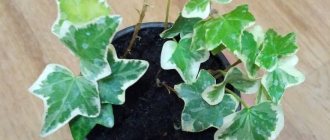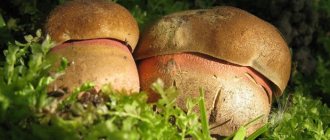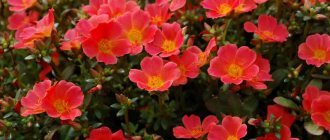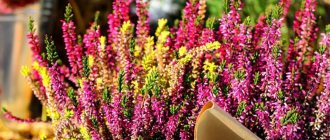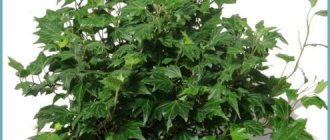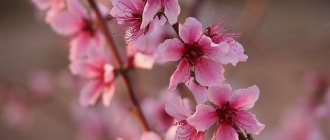A little history
The beautiful and unpretentious cornflower, a description of which was found at the beginning of the 19th century, was initially attributed by scientists to the genus of chrysanthemums. But then botanists more carefully studied the culture and related this wonderful plant to asters. True, unlike the latter, nivaria is more unpretentious and is able to maintain the splendor of its forms even with insufficiently good care. This is what brought the plant great popularity. Despite the fact that the birthplace of the flower is mainly the central regions of the European continent, the delicate beauty of the perennial has won the hearts of gardeners in South America and Australia. There, cornflower is grown in greenhouses as an ornamental plant.
Description and features of Popovnik
Nivyanik is an attractive perennial herbaceous plant and the largest representative among the chamomiles. It has a medium, unbranched stem topped by a single compound flower of white petals. Their height reaches up to 85 cm. Mainly distributed in southern and central Europe. The plant is found in many habitats, especially in meadows and pastures, also on coastal cliffs, wastelands. The rhizome of the flower is usually fibrous in shape.
More information about the plant can be found in this video.
The inflorescences resemble a basket, up to 3-6 cm in diameter. The petals are reed-shaped, white in color, the center of the plant is yellow. The seeds ripen very quickly and are prone to self-sowing. Let's consider the most famous varieties of culture:
Species features
To date, scientists have identified about 25 plant species, 10 of which are actively grown in home gardens. The vast majority of varieties are perennial, but annual nevus can also be found.
The plant is distinguished by tall (sometimes up to 1.3 meters) erect stems, simple or weakly branched. The foliage is collected mainly in a basal rosette, has a dense structure and ribbed shape.
Nielberry flowers are primarily white in color, which is how the plant gets its Greek name, “white flower.” However, there are pinkish and even yellow varieties. In addition, leucanthemum (nownberry) can amaze gardeners with the variety of inflorescence shapes. The most common are large flowers of a regular, round shape with simple, reed petals (one flower can have from 12 to 40). However, recently terry varieties have begun to gain popularity. In addition, you can find cornflower with inflorescences in which 2-3 baskets are collected on one stem at once.
The main difference between cornflower and other species is its large flowers, tall, straight and dense stem. These indicators are maintained regardless of the variety
Popovnik or common cornflower/Leucanthemum vulgare
The closest relative of the cornflower is considered to be the garden chamomile. In comparison with which nivyanik can be called a more noble and elite culture. However, you can often hear such a name as priest. True, in this case we are talking more about a wild-growing variety, which is also called common cornflower. There is certainly a lot in common between the two plants, especially in appearance. But, in the usual sense for a gardener, nivaria is, after all, an ennobled, domestic plant, distinguished by high varietal qualities, the maintenance of which requires the creation of certain conditions. But popovnik is a weedy type of chamomile. Its stems are softer, drooping up to 30 cm in height, and the flowers are small. But the popovnik, like chamomile, is famous for its healing properties, while the noble nivaria has a much lower healing effect.
Botanical description
The flower is a plant with red rhizomes, straight, leafy, slightly branched stems from 30 to 120 cm high and entire, oblong-lanceolate, dark green, lobed or crenate leaves along the edge. Depending on the type, nivberry leaves can be stem or basal. Large flowers with a diameter of 6 to 12 cm, absolutely similar to daisies, are actually basket inflorescences consisting of yellow tubular flowers surrounded by white or yellow marginal reed flowers. Nielberry baskets are formed at the ends of the stems twice a season: from May to July and in August-September. Nielberry seeds, ripening in the center of the inflorescence, remain viable for 2-3 years.
Reproduction of cornflower
Like all perennial flowers, cornflower reproduces well by seeds. However, if you decide to germinate seeds, be prepared for the fact that the result may differ greatly from what you expected, especially when it comes to hybrid varieties. The perennial does not retain varietal characteristics well when planted from seed. In addition, a plant obtained by this method will produce flowers only in the second or third year. This technology is supported by a wide range of replacement material, which can be easily found in any store, while when propagating by root division, problems may arise with finding the required variety.
So, if you have already purchased a unique nevus, growing from seeds will not be difficult:
- sown cornflower seedlings either in open ground after warm weather sets in, or on window sills in small greenhouses;
- seeds need to be planted shallowly (no more than 1-2 mm);
- it is necessary to constantly monitor soil moisture;
- in a greenhouse, the seeds will hatch within a couple of weeks; in open ground, this process can take 3 weeks;
- as soon as the plant has true leaves, the crops must be thinned out and, if possible, pruned;
- in mid-June, the seedlings can be transplanted to their “permanent place of residence.”
An already grown bush can be propagated by root division. This should be done in early spring or autumn after the plant has completely bloomed. The second option is more preferable. Root division is a natural process for the cornflower, and it tolerates it well. All the gardener needs to do is dig up a bush with a large lump of earth, soak it in water and separate the young shoots from the mother bush. The success of the procedure will largely depend on the number of roots left by the bush. Therefore, try to divide as carefully as possible.
Myths and legends
The common cornflower personifies innocence and is considered a symbol of unrequited love. In nature, it grows throughout most of Russia and, thanks to its snow-white petals, is a favorite flower for the simplest fortune-telling - love or love. There are many myths and legends about this flower. All of them, as a rule, talk about love, waiting and loneliness.
One of the legends tells about a field fairy who fell in love with a young shepherd. The fairy taught him the secrets of healing with the help of herbs and endowed him with the power of a healer, in the quiet hope of tying the young man to herself. But the shepherd boy, having received secret knowledge and power, began to use them for his enrichment and gradually forgot about the one who endowed him with these gifts. The fairy was waiting for him, suffering, crying, and every tear flowing from her eyes turned into a daisy. And the fairy herself became thinner and melted. The strength of the former shepherd was also melting. He remembered the fairy only when she died and the magical powers left him forever. The young man came to that meadow, but instead of a fairy he saw a huge field of daisies...
Planting and care
The plant does not require care, but it will be easier to get a good bush with high varietal qualities if you take into account some of the preferences of this plant.
Growing cornflower in open ground:
- cornflower loves neutral, well-fertilized and moist soils;
- the plant feels better in open, sunny spaces;
- does not tolerate dense plantings and requires regular thinning.
Niwberry is planted in loose soil with the addition of peat, humus and sand in equal proportions. The holes for this purpose are made commensurate with the root system and are located at a considerable distance from each other.
Do not bury the plant. When planting, make sure that the middle of the bush is not covered with soil.
How far the bushes need to be planted depends on the variety; usually the manufacturer indicates these parameters on the packaging. But when planting nevus, you must take into account that it is a perennial that will spend at least 3-4 years in one place. During this time, each bush is able to grow and form clumps approximately 60 cm in diameter. In addition, nivaria, the care of which comes down mainly to timely watering, is quite demanding in terms of lighting. The main decoration of this type of daisy - large flowers on tall, elastic stems - disappears when shaded. The bush begins to wriggle, bend toward the ground, and the flowers decrease in size.
In order for the flower to please with its decorative appearance, it must be planted in sunny places. It is permissible to place cornflowers in flowerbeds illuminated by direct rays only in the first half of the day.
Niwberry, planting and caring for it in open ground is very simple and will delight flower growers with beautiful flowers throughout the summer. And in order for the inflorescences to become even larger, once every two weeks you can feed the perennial with a weak solution of mullein or other organic matter.
Caring for nibbles in the garden
There is nothing complicated about caring for nevus. Bushes should be provided with timely watering, fertilizing, weeding, and loosening the soil surface. In order for the bushes to always look spectacular and beautiful, you need to pick off the baskets that have begun to fade in time. Watering is carried out only during drought, and 1 bucket of water should be consumed per 1 square meter of land. After the rain has passed or watering has been done, the surface of the soil between the bushes will need to be loosened, while tearing out all the weeds.
To feed the nevus, it is recommended to use Nitrophoska: at the beginning of the growing season, you should use a solution in which the nitrogen content is high, and during budding, potassium should predominate in it. It is also recommended to feed this crop with mullein solution. If there is such a possibility, then such organic matter should be added to the soil once every half month, and then there will be no need to feed the cornflower with mineral fertilizers. However, in this case, during the budding period, bone meal must be added to the soil instead of Nitrophoska. When flowering ends, the bushes will begin to very quickly lose their decorative properties; in this case, their stems must be shortened to 10–15 centimeters.
Diseases and pests
In rainy weather, bushes can be affected by fungal diseases, especially if it rains for a long time. Nielweed can suffer from rust, powdery mildew, downy mildew, leaf blight, fusarium blight, stem rot and bacterial canker. At the first symptoms of any of the listed diseases, the bush should be well sprayed with Bordeaux mixture (1%), if there is such a need, then this procedure will need to be repeated 2 or 3 more times with an interval of one and a half weeks. However, before starting treatment, it is best to dig up and destroy those bushes that are very affected.
Slobbering pennies, meadow thrips and chrysanthemum miners can settle on the bushes. To clean the bushes from such harmful insects, they and the surface of the soil under them should be sprayed several times with a solution of Bazudin, Inta-vir, Aplaud or Vermitek. You can also use an infusion of plants with insecticidal properties such as celandine, marigold or yarrow for treatment. Experienced gardeners recommend treating the plant immediately with insecticidal preparations, because they are much stronger than folk remedies and more effective.
The best varieties
As mentioned above, cornflower is a large type of garden chamomile that has a large assortment of cultivated, hybrid and wild varieties. Among them are the following varieties that are most attractive for growing:
Large-flowered nevus
presented in three varieties: “white”, “princess” and “giant”. The latter is distinguished by a larger cap, the diameter of which reaches 13 cm. The varieties produce dense, long stems and are excellent for cutting. They can stand in water for up to 9 days. Prefers sunny places and moist soils. They bloom from mid-summer until frost.
Nivyanik Magnificent
Nivyanik The largest is another subspecies, represented by a wide variety of varieties. The caps of these varieties are large – up to 17 cm (“Snow Lady”). The height of the bush can vary depending on the variety and varies from 30 cm (for example, “Little Princess”) to 1 meter (“Stern von Antwerpen” or “Winner”).
The main part of the varieties of “Nivyanika Magnificent” has double inflorescences with a variable color. As a rule, the marginal petals of the flowers are white, and the tubular middle changes shades from yellow-green to pinkish-cream. The varieties are characterized by late flowering.
The most popular varieties are:
- "Fiona goghil" - a characteristic feature is the curled outer edge of the petals.
- “Aglaya” is a very delicate flower with long marginal petals and a lush shortened middle.
- 'Real Neat' has a large yellow center framed by several rows of tubular white petals.
- "Alaska" is one of the varieties of the "Magnificent" or "Greatest" cornflower that deserves special mention. The plant is quite tall with bright white petals and a bright yellow core. The inflorescences are large, up to 10 cm in diameter. A relatively undemanding variety that tolerates low temperatures.
Nivyanik variety "Real Nit"
Nivyanik variety "Aglaya"
Nivyanka variety "Alaska"
Nielberry variety "Fiona Goghill"
The "Magnificent" variety of cornflower loves sunny places. It is preferable to cover the roots for the winter.
Crazy Daisy
this variety can be especially highlighted, as it is always popular among gardeners. If you want to grow terry nevus on your plot, then you won’t find a better option. It has the largest flowers among terry varieties - up to 12 cm in diameter. On packaging it is often called chrysanthemum, due to the unusual appearance of the inflorescence. In agricultural technology it is no different from other terry varieties. Requires shelter for the winter.
But, no matter what variety of nevus you choose, the main thing is to use this crop correctly in landscape design. Only then will the multifaceted beauty of the perennial reveal itself fully.
Common leucanthemum or leucanthemum
The plant belongs to the Asteraceae family. Very common in the mountains of Europe. In Latin it is read as “leucanthemum” and there are about 20 species. Among modern varieties there are many varieties that differ in the height of the bush and the appearance of the inflorescences.
The familiar nivyanik
The predecessor of all species is the common leucanthemum or leucanthemum vulgare (Latin). This is a herbaceous perennial plant. It has a developed root system, which has a reddish tint. The shoots can reach up to 1 m in height, covered with whole leaves with a crenate edge. The diameter of the flower is on average 8-10 cm, the marginal petals are white, the middle petals are tubular, yellow.
Important! The plant can be grown in one place for no more than 4-5 years.
Various types of nevus are used in group plantings on lawns and against the background of ornamental shrubs, as well as in borders, flower beds and for cutting. In water, flowers do not lose their decorative effect for 7-10 days.
Choosing a landing site
The purity and innocence of cornflower flowers will perfectly emphasize the individuality of any garden design. It can be used both in independent plantings and to highlight brighter flowers or shrubs. Low-growing varieties look good in mixbarders, slides or rakaria. For example, Kuril nivyanik. The height of the plant does not exceed 15 cm, and at the same time it has a cap of 8 cm in diameter, thanks to which it looks very decorative.
Tall varieties of cornflower
Nivyanik Kuril
Nivyanka grandiflora
Tall varieties can also be used in landscape design. They are grown mainly for cutting. However, these plants can also be beautifully combined with climbing crops or planted as a hedge. When creating designer landscapes, take into account the flowering time of the nivaria, and the fact that after flowering the plant needs to be pruned almost to the very root. The decorative effect of this perennial, unfortunately, is short-lived.
Swamp cornflower
When creating meadow mixes, you should pay attention to swamp nevus. This plant does not exceed 30 cm in height and has neat, delicate flowers up to 3 cm in diameter. It is best to combine cornflowers with crops such as lilies, cornflowers, bells or delphinium. Don’t be afraid to experiment with nevus, create your own flower beds. Try combining delicate cornflower with coarse deciduous crops and find your own inimitable solutions.
Use in folk medicine
The medicinal properties of the common cornflower are widely used in home health recipes. Traditional medicine uses the plant for digestive and inflammatory ailments, spasms and skin diseases.
For hemorrhoids
A decoction of common cornflower relieves inflammation of hemorrhoids and helps stop bleeding. Prepare the product as follows:
- Grind dried nevus flowers in the amount of five large spoons.
- Pour the raw material with 500 ml of water.
- Heat over low heat for eight minutes after boiling.
- Cool under the lid and strain.
The warm infusion can be added to sitz baths and used as an anal lotion. It is best to combine both methods of treatment, then the remedy will give a quick effect.
For cramps in the intestines
Common cornflower relaxes smooth muscles and has an analgesic effect. For intestinal cramps, use the following infusion:
- Pour two small spoons of dried meadow chamomile flowers into a glass.
- Pour in 200 ml of hot liquid.
- Cover with a lid and leave for half an hour.
- Strain at the end of the period.
You need to drink half a glass of nevus infusion up to four times a day.
For amenorrhea in women
Common cornflower has a good effect on minor but persistent menstrual irregularities in women. To gently normalize the cycle, use the following infusion:
- About 20 g of dry leaves of the plant are poured with a glass of boiling water.
- Keep covered for half an hour.
- Pass through gauze.
You need to drink an infusion of common cornflower throughout the day, a single dosage is 80 ml. In total, the course of treatment is continued for two weeks.
Warning! If there are significant delays in menstruation, you should consult a doctor and find out the cause of the irregularities.
Nielberry infusion relieves irritability during PMS in women.
For fever
The valuable properties of the common cornflower help relieve high fever caused by a cold or inflammation. The medicine is prepared as follows:
- Pour 10 g of dry herb into a glass container.
- Pour in 250 ml of hot liquid.
- Cover with a lid and wrap in towels.
- Leave for four hours and then strain.
We recommend reading: Witch hazel: composition, benefits and harms, instructions for using the tincture
You need to take an infusion of common cornflower, a large spoon up to four times a day. The duration of the course is a week.
For ischemia
Common cornflower improves cardiovascular activity and prevents the development of complications during ischemia. For treatment, make the following infusion:
- Grind and add 15 g of dry rose hips to a thermos.
- Add the same amount of meadow chamomile herb.
- Pour 500 ml of boiling water over the components.
- Close the thermos and leave it overnight.
Strained infusion of cornflower is taken 50 ml four times a day on an empty stomach. In total, therapy is continued for three weeks.
For tonsillitis
Common nevus effectively relieves inflammation and fights bacteria in chronic tonsillitis. Traditional medicine advises preparing an infusion for rinsing:
- Dry grass is crushed in the volume of a large spoon.
- Brew 300 ml of boiling water.
- Leave covered for an hour.
- Strain through folded cheesecloth.
Treat the throat with the infusion three times a day for a week. Before use, the product should be warmed to a warm state.
For lichen
The anti-inflammatory and healing properties of common nymph are beneficial in the treatment of lichen. A solution for external use is made as follows:
- Pour 400 ml of boiling water over the grass and flowers of the plant in the amount of three large spoons.
- Place the product in a water bath and simmer for 20 minutes.
- Remove from the stove and leave covered for two hours.
- Pass through a gauze filter.
Use a solution of common cornflower to wipe the skin and lotions. It is recommended to continue treatment for two weeks until the condition of the epidermis becomes noticeably better.
You can wipe your skin with a decoction of cornflower up to four times a day.
What is terry
Flower doubleness is an anomaly associated with an increase in the number of petals during the process of transformation of other parts of the plant caused by external factors. The terry nature of the nivaria is achieved through the selection of different varieties, the addition or deprivation of certain nutrients, infection with a bacteriological or viral disease that does not affect the viability of the plant.
Sometimes double varieties are sterile, like other hybrids, or, more often, lack the ability to pass on altered genetic material through growing from seed to the next generation. If for some reason the mutations are persistent and transmitted to new plants through seed material, then such a hybrid becomes a variety.
Growing
Daisies only need sunny places. In partial shade they develop and bloom much worse. This is especially true for the largest cornflower and varieties based on it. Nivyanik are picky about soil; they do not like either light sandy or heavy clay soils. Before planting, care must be taken to ensure that the soil is fertile, sandy loam or loamy. Good drainage is another important condition for the growth and flowering of nibbles. In damp or waterlogged areas, plants often get sick and age faster. On poor soils, as well as with a lack of moisture, the flowers become smaller. The frequency of dividing clumps depends on the original species; superior nevus varieties need more frequent division than hybrid and ordinary nevus varieties.
Chamomiles love watering, but do not tolerate waterlogging. With proper watering, the result is immediately visible, the color of the flowers becomes brighter, and the flowers themselves become larger. Nivyanik loves feeding, especially with organic fertilizers; two or three feedings per season are quite enough. To preserve decorativeness and re-bloom, it is better to remove faded shoots. Under favorable conditions, repeated flowering is possible. It is better to mulch terry varieties for the winter, but in early spring do not forget to remove the shelter as early as possible so that the bushes do not dry out.
Nivyanik Snegurka | Nivyanik Snegurka |
Reproduction by division and cuttings
Cuttings are carried out in July-August. It is necessary to take the basal shoots, which have formed a rosette, with the rhizome. The cuttings are planted in holes in the same way as seedlings. Then watering is done.
Over the course of a 4-5 year period, the nivaria grows. The flower bed becomes excessively dense. Therefore, it is necessary to divide the bushes in the spring or at the end of September after flowering.
They are dug up, the roots are shaken off the soil and sections are selected, each of which should have at least one rosette left. The divisions are transplanted at intervals of 30 cm.
Disease and pest control
Fungal diseases often attack this plant. Niwberry is especially often susceptible to powdery mildew and rust. To eliminate their impact, it is necessary to prevent the accumulation of moisture and regularly remove dried inflorescences and stems.
If the fungus does infect the plant, then a 1% solution of Bordeaux mixture is used for treatment. It is applied up to 4 times at intervals of 10 days. It is also possible to treat nivaria with ash.
For severely affected bushes, the optimal solution is to completely cut off the stems and burn them off-site. The root part is sprinkled with ash. If the manipulations are carried out correctly, the new shoots will be normal.
Nivyanik will not only decorate a personal plot or flower bed, but will become a decorative decoration for the house. To do this, tall flowers are cut for bouquets. The plant can be combined with cornflowers and bells and looks great when decorating borders.
Garden design and application
Nivyaniki are good not only for decorating the garden, but also for cutting. Growing cornflowers for bouquets has its own specific characteristics. The bushes must have a large feeding area, they must be divided annually for constant rejuvenation, they need good feeding (especially organic matter) and regular watering. Care should be intensive, then the flowers will be large and the peduncles will be long. Bouquets of daisies with delicate and airy “companions”, for example, sprigs of gypsophila or cornflower, are especially good. When cut, they last for quite a long time - up to 10 days. When using nibbles in a design in a mixborder or in flower beds, they need to be placed so that they can be easily approached for frequent digging and replanting. Niwyaniki are good as individual plants in groups on lawns, against a backdrop of green shrubs. You can make a separate flower garden from a variety of daisies that bloom at different times. In the spring - doronicums, in the summer - nivaria, pyrethrum, small petals, closer to autumn - heleniums, echinaceas, rudbeckias. Niwyaniki, pyrethrums can serve as the basis of a flower garden of meadow plants and in this case are combined with bells, yarrow, poppies and cereals.
